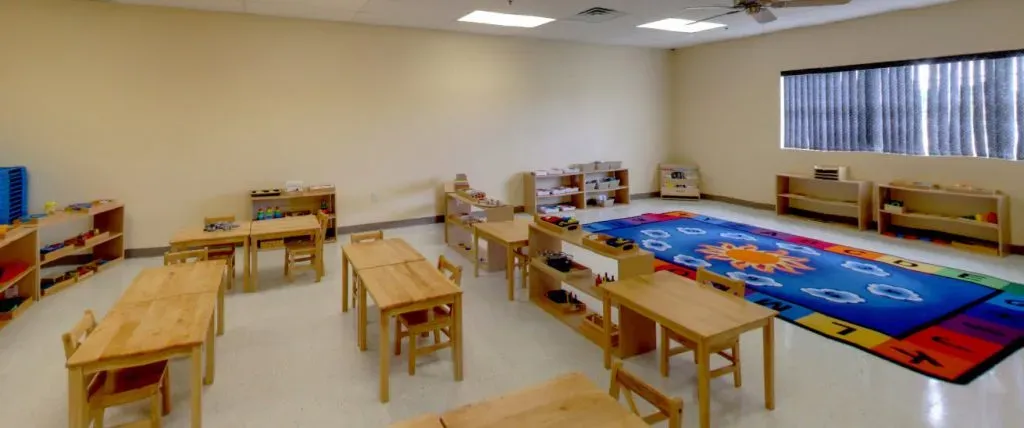

The Pre-Primary Environment is designed for children ages of 18 to 36 months. The language patterns they are developing at this age are accelerating, and this environment allows them the opportunity to explore and develop these particular skills through lessons and social interaction. The benefits of the Montessori multiage grouping actually becomes a positive factor in your child’s day to day educational, social, and emotional, skillsets. It is within this environment that there will be an “explosion’ in their language development. The younger children have their older friends to interact with and learn from, the older children have their younger students to interact with, look after socially, show empathy, and even give simple work lessons. These interactions create the sweetest classroom culture for the children to learn in each day.
It is on this foundation educators begin establishing effective learning skills and habits, instilling the joys of independent learning. The class is a balance of children not ready for the Primary Environment and yet too mature for the Toddler Classroom, it is also a safe place for the children who are not entirely toilet trained. They can master that skill while simultaneously keep moving forward academically.
Here is an example of a typical day in our Pre Primary Room:
1. Independance
This is the age of independence, ’I can do it myself’. Encouraging fine motor skills, gross motor skills, confidence, all leading towards true independence. Children at this age are truly capable, we as educators and parents, must have faith in their abilities. If we doubt them, they will see and sense that, this will not lead to success. Allowing them time to complete tasks is equally vital.
2. Routine
Providing a consistent routine is foundational to the success of a Montessori child, therefore we keep the day as consistent, day to day, as possible. Doing this makes an astounding difference in their learning trajectory.
3. Self Control
This concept begins by teaching the child to first follow one direction at a time, then more than one at a time. Areas are marked off by colorful tape, showing where to line up to go outside. Protocols begin their first day of class for choosing works, asking for lessons, placing works back on the shelf where they originally got them, learning when to touch and when not to touch.
4. Clean Up
From the first day of class the child is taught that part of their lesson is to put work back where and how they found it, so their classmates may also use the work. If anything drops and a mess occurs, they learn to clean up after themselves. What is wonderful is that often their classmates will lend a hand to help them, as will their teachers. The teachers will never initiate the clean-up, instead they will first encourage the child and always assist them towards a successful completion.
Visit Our Classrooms
🕐 30 mins
📅 October , 2025
🕐 30 mins
📅 October , 2025